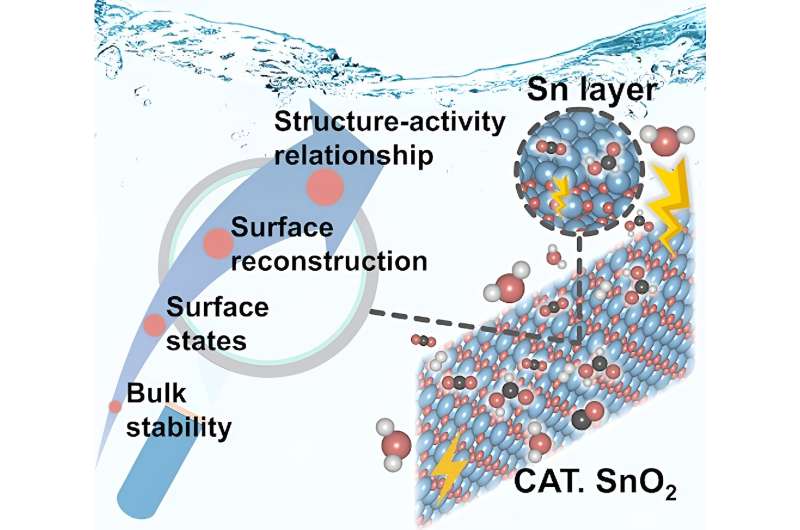This article has been reviewed according to Science X's editorial process and policies. Editors have highlighted the following attributes while ensuring the content's credibility:
fact-checked
trusted source
proofread
Deciphering catalysts: Unveiling structure-activity correlations

In a new step toward combating climate change and transitioning to sustainable solutions, a group of researchers has developed a research paradigm that makes it easier to decipher the relationship between catalyst structures and their reactions.
Details of the researchers' breakthrough were published in the journal Angewandte Chemie International Edition on January 29, 2024.
Understanding how a catalyst's surface affects its activity can aid the design of efficient catalyst structures for specific reactivity requirements. However, grasping the mechanisms behind this relationship is no straightforward task given the complicated interface microenvironment of electrocatalysts.
"To decipher this, we honed in on the electrochemical CO2 reduction reaction (CO2RR) in tin-oxide-based (Sn–O) catalysts," points out Hao Li, associate professor at Tohoku University's Advanced Institute for Materials Research (WPI-AIMR) and corresponding author of the paper. "In doing so, we not only uncovered the active surface species of SnO2-based catalysts during CO2RR but also established a clear correlation between surface speciation and CO2RR performance."
CO2RR is recognized as a promising method for reducing CO2 emissions and producing high-value fuels, with formic acid (HCOOH) being a noteworthy product because of its various applications in industries such as pharmaceuticals, metallurgy, and environmental remediation.
The proposed method helped identify the genuine surface states of SnO2 responsible for its performance in CO2 reduction reactions under specific electrocatalytic conditions. Moreover, the team corroborated their findings through experiments using various SnO2 shapes and advanced characterization techniques.
Li and his colleagues developed their methodology by combining theoretical studies with experimental electrochemical techniques.
"We bridged the gap between the theoretical and experimental, offering a comprehensive understanding of catalyst behavior under real-world conditions in the process," adds Li.
The research team is now focused on applying this methodology to a variety of electrochemical reactions. In doing those, they hope to uncover more about unique structure-activity correlations, accelerating the design of high-performance and scalable electrocatalysts.
More information: Zhongyuan Guo et al, Deciphering Structure‐Activity Relationship Towards CO2 Electroreduction over SnO2 by A Standard Research Paradigm, Angewandte Chemie International Edition (2024). DOI: 10.1002/anie.202319913
Provided by Tohoku University





















